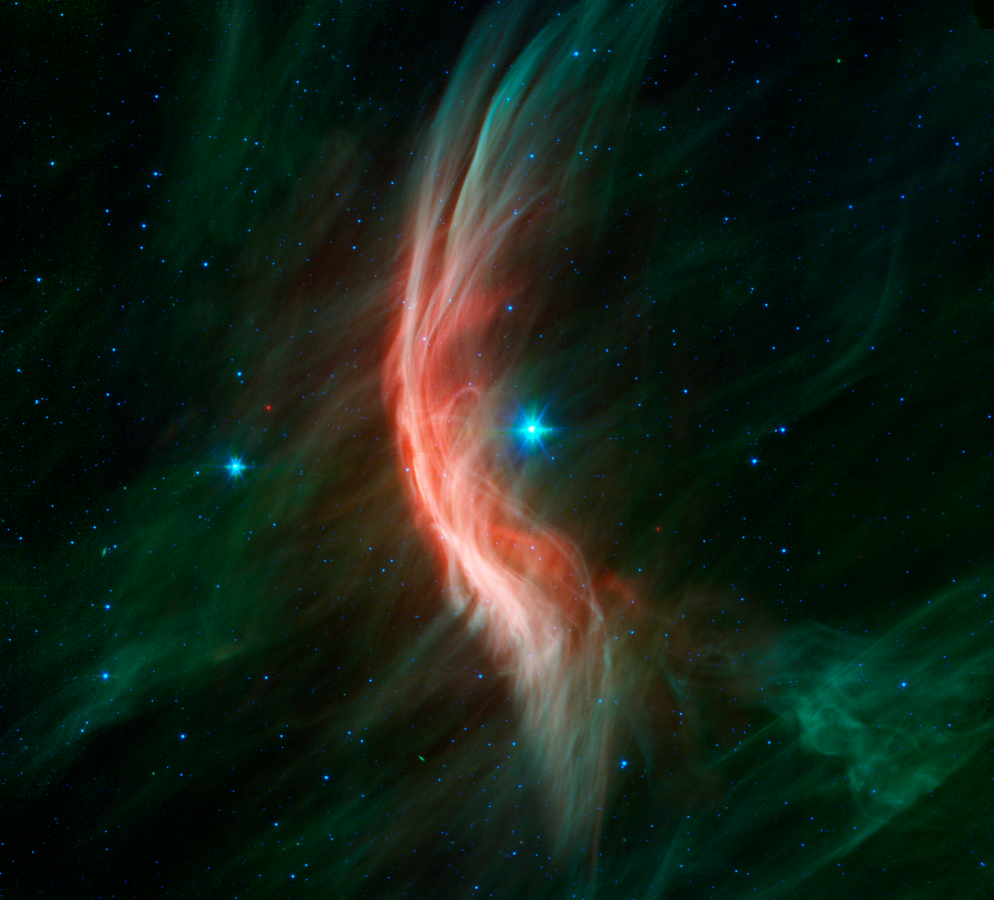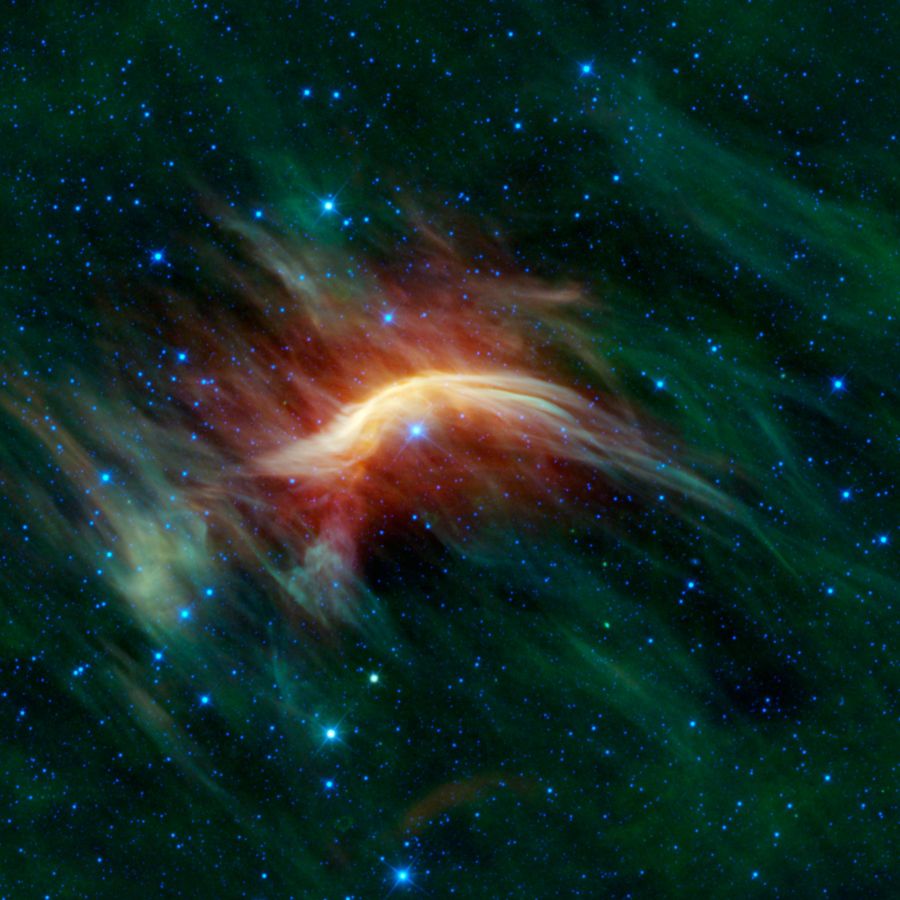Located 366 light-years away in the constellation of Ophiuchus is a runaway star called Zeta Ophiuchi (ζ Ophiuchi) or Zeta Oph. It’s a runaway star because it was flung out of a star system as a result of a supernova. This enormous star is about 20 times the mass of our own Sun! Not only that but our Sun’s radius is about 696,340 km and Zeta Oph is 8 times that. This star is huge but is rotating extremely fast. It’s rotating about 400 km/s where it can rotate this gargantuan mass once per Earth day! To give you some perspective our Sun rotates at 1.997 km/s or about once every 27 days.

Zeta Oph is relatively young from the perspective of the universe. It’s about three million years old and is an O-type star giving it that blue hue. Scientists say it’s roughly halfway through its stellar life and in the next few million years go supernova. Of course, before that, it’ll first turn into a red supergiant and expand wider than Jupiter’s orbit and then have a spectacular supernova event.
If you’re wondering about the direction the star is moving its speed across left at 24 km/s.

By now you have already got a sense of how enormous, fast, and dangerous this star is. If you weren’t still in awe then here’s one more piece for you. The yellow bow you see in the photo above is the bow shock. Similar to a speedboat pushing through the water and creating a bow. However, this is in interstellar space and instead of water, it’s pushing cosmic dust and gasses that create an immense event that the stellar wind is compressing the gas and making it glow brightly!
NASA also gives us what each color represents since this was taken in infrared.
“The colors used in this image represent specific wavelengths of infrared light. Blue and cyan (blue-green) represent light emitted at wavelengths of 3.4 and 4.6 microns, which is predominantly from stars. Green and red represent light from 12 and 22 microns, respectively, which is mostly emitted by dust.”
Sources/Further Reading:
